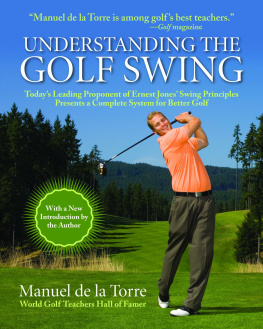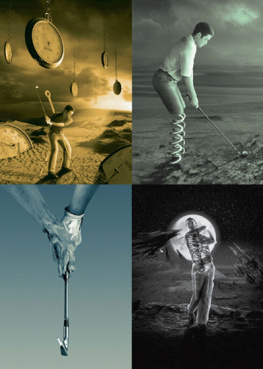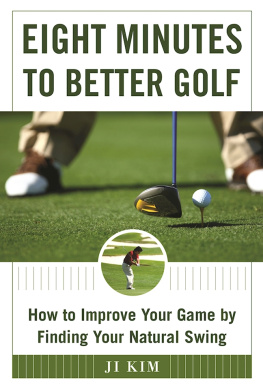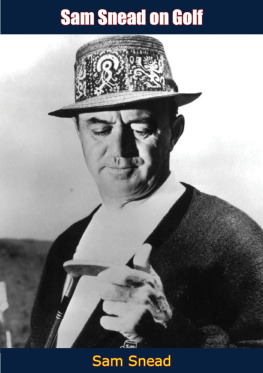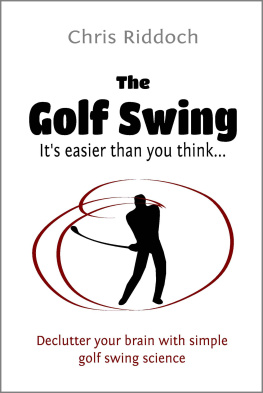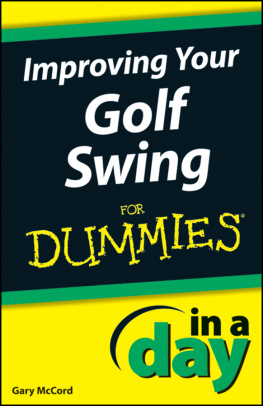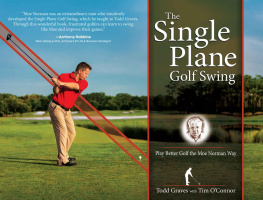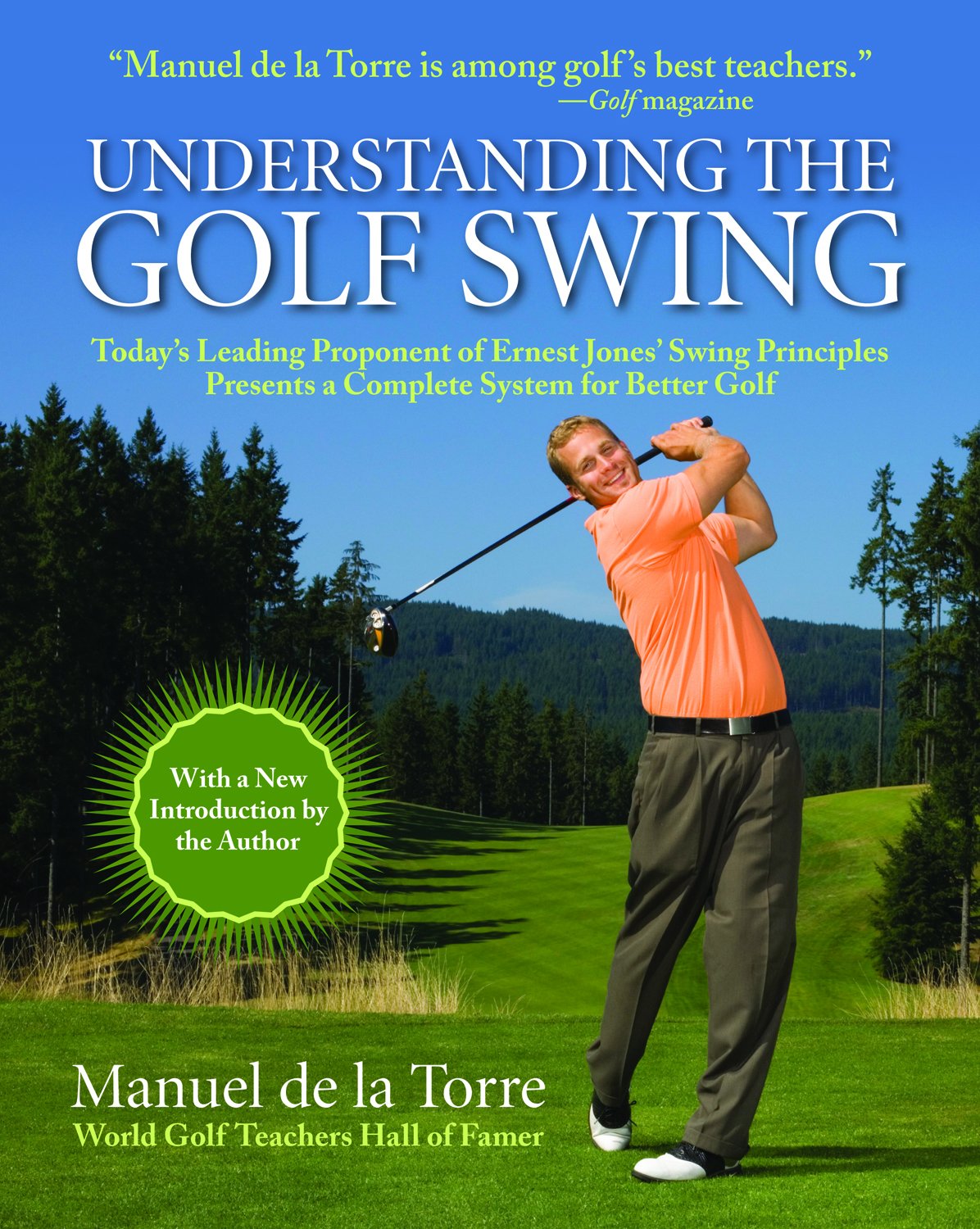Acknowledgments
I would like to thank all the PGA and LPGA professionals who were trusting enough to allow me to help them with their golf swings and their golf games. With some, I only worked once or twice, but with others, the partnership lasted a number of years. They supplied me with a tremendous number of thrills as they succeeded in their goals and became winners. It is a great feeling having been involved in their success. For that, I will be forever grateful. They are Tommy Aaron, Pam Barnett, Bob Brue, Mary Lou Crocker, Betty Ferguson, Pam Higgins, Carol Mann, Mary Mills, Martha Nause, Candy Phillips, Sherri Steinhauer, Sandra Spuzich, and Peggy Wilson. I am most thankful to the Milwaukee Country Club Board of Directors for granting permission to have the photographs for this book taken at their fine golf course. I also wish to express my most sincere gratitude to my brother, Luis de la Torre, who spent a great deal of time helping me to get this book ready for publication. He is responsible for all the photographic work.
In search of better golf,
Manuel de la Torre
Appendixes
15 Ideas Detrimental to Building and Maintaining A Good Golf Swing
- Grip tighter with the last 3 fingers of the high hand and very lightly with the fingers of the low hand.
- The pressure used to grip a golf club should be equal from the little finger of the high hand to the thumb and forefinger of the low hand.
- The pressure will move up and down the grip in response to the velocity with which the club is being swung.
- The greater the velocity, the tighter the last three fingers will hold, but this is entirely a subconscious reaction.
- The player should determine how tightly the club should be held.
- The amount of pressure used in the grip (both hands considered) is directly proportional to the length of the club to be used and the velocity that will be generated.
- The correct pressure is set subconsciously not consciously.
- Whatever pressure the player sets at address should be maintained constant throughout the swing.
- When swinging the club away from the ball in the backswing, use only the high hand, and allow the low hand to go along for the ride.
- The low hand is a very important factor in a good backswing for:
- i. Retaining the correct plane.
- ii. Maintaining the clubhead in a square attitude.
- iii. Maintaining necessary club control.
- Both hands must be used to the same degree in the backswing so that they do not work against each other.
- Lack of use of the low hand in the backswing will result in high hand dominance, which will lay the club off and make the backswing very flat.
- Keep the left arm straight and left elbow close to your body.
Cannot be done and retain the correct plane. If attempted, backswin will:
- Become very flat.
- Be very short.
- Stay down and keep the head down.
Both destroy the synchronization between the club and the body. Rather than making an effort to stay down or keep the head down, keeping the eye on the ball is what should be emphasized. The ball should be followed once it has been struck with the clubhead. The player should finish in a very erect position and facing the target. Staying down prevents this.
- Keep the left arm straight.
- Player will attempt to keep the left arm straight throughout the swing causing the clubhead to be open at impact.
- Ball will slice and the shot will have no distance.
- The left arm should be permitted to extend and remain extended without tension so that it can fold after impact. Everyones extension potential is different.
- Pull with the left hand to start the forward swing from the end of the backswing.
This is bad because:
- The force applied to pull has a straight line attitude and the swing is circular.
- Since the swing is circular, everything a player does to produce the golf swing must have a circular attitude.
- Pulling will tense the target side arm and decrease the freedom in the wrist.
- Result will be:
- i. Shot will be rather short.
- ii. Shot will be sliced.
- Shift the weight to the back foot in the backswing.
- This causes a loss of the center of the swing.
- Produces swaying.
- Produces great inconsistency because the center of the swing must be re-established prior to impact or the clubhead will not return square to the target line.
- Requires a lot of practice to maintain proper timing and re-establish the swing center.
- Shift the weight to the front foot on the forward swing.
- Weight should and does transfer to the front foot in perfect synchronization with the clubs swinging motion as a response to that motion.
- The player can never establish the proper rate of transfer consciously. It will be done either too fast or too late, mostly it will be too fast. The player will tend to slice.
- The weight transfer to the front foot should take place in the same manner as it does when throwing a ball underhand naturally and as a result of the motion.
- Keep the weight on the inside of the back foot in the backswing.
- Any effort to do this will restrict the shoulder and hip turn.
- Encourages swinging from the outside in the forward swing.
- Get the target side hip out of the way on the forward swing.
- Hip action as all other body motions should be a response to the clubs swinging motion.
- Hips have three types of motions as the swing is performed.
- i. They tilt.
- ii. They turn.
- iii. They move forward.
- In order for a player to do this properly, the following would have to be known.
- i. What percentage of each of 11-b would have to be produced.
- ii. When does each type of motion start.
- iii. At what rate must each be done.
- iv. How much of each must be done for each club used. As the clubs become longer and the planes flatten, the percentage of each in 11-b changes.
- Hit down with the irons and up with the woods.
- A swing is a backward and forward motionto and fro. It doesnt change because the clubs used have different names.
- In the above definition of the swing there is no down and there is no up.
- The club should be swung with the intention of sending the ball to the target not with the intention of driving the ball into the ground or up into the sky.
- If an object is being propelled in a certain direction with another object, the direction of both objects must be the same.
- Only two shots in golf require a downward attitude and both are in sand bunkers.
- i. A buried lie.
- ii. Fried egg or crater-like lie.
- Use the legs, feet, hips, and shoulders in the forward swing.
- The use of any of the above prevents:
- i. Squareness of the clubhead at impact.
- ii. Swinging the club in a forward directiontoward the target.
- The body must be allowed to respond naturally to the swinging motionit should not be used to control it.
- Any effort to use any part of the body destroys the swinging motion.
- Depending on how different parts of the body are used, the results can be:
- i. Sliced shots.
- ii. Pulled shots.
- iii. Very short shots.
- iv. Never good solid straight shots.
- Swing the club away from the ball in one piece in the backswing.

